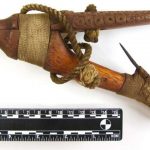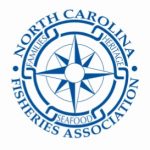Category Archives: Inland Fisheries

Historical Society donates fishing tug to Knife River
A historical landmark paying homage to the North Shore’s once-thriving commercial fishing industry began its journey Wednesday back to where it was built in 1939. After sitting on the shore of Agate Bay in Two Harbors for 26 years, the fishing tug Crusader II was lifted off its supports, placed on a trailer and hauled off to Knife River in the hopes of restoring it to its former glory. “We are basically giving the Crusader back to the community of Knife River as a Christmas present more or less,” Mel Sando, director of the Lake County Historical Society, said as he watched a crew from Knife River Marina secure the boat to the trailer. Used primarily for catching herring in Lake Superior, the Crusader II was built in Larsmont by Reuben and Helmer Hill and was christened in Knife River by Crown Prince Olav of Norway during his visit to the North Shore, according to the Historical Society. “A group from Knife River approached the Historical Society and asked if they could have the boat back,” Sando said. “We recognize that they are in a much better position to provide good stewardship for the boat.” Read the story here 14:47
Video Report: Ride along with the largest commercial fishing operation in Michigan
 A major player in Michigan’s commercial fishing industry, Serafin Fisery, is located in Pinconning. Dana Serafin runs the business with his father, Jerry. Jerry tells us, he’s been doing this since he was a boy in the 1960s and Dana’s been on his deck since he was nine-years-old. “Now it’s a little bit harder, you gotta pay the bills! When you’re nine, you don’t care,” said Dana. The Serafin family has a license for more than 80 fishing nets. They leave these trap nets in specific locations, 100-120 feet below the surface of Lake Huron. “He is the largest producer in the state of Michigan,” said Tom Goniea, senior fish biologist and commercial fish administrator for the Michigan Department of Natural Resources. Goniea said most of Dana’s sales stay right here in Michigan. Watch the video, read the rest here 10:14
A major player in Michigan’s commercial fishing industry, Serafin Fisery, is located in Pinconning. Dana Serafin runs the business with his father, Jerry. Jerry tells us, he’s been doing this since he was a boy in the 1960s and Dana’s been on his deck since he was nine-years-old. “Now it’s a little bit harder, you gotta pay the bills! When you’re nine, you don’t care,” said Dana. The Serafin family has a license for more than 80 fishing nets. They leave these trap nets in specific locations, 100-120 feet below the surface of Lake Huron. “He is the largest producer in the state of Michigan,” said Tom Goniea, senior fish biologist and commercial fish administrator for the Michigan Department of Natural Resources. Goniea said most of Dana’s sales stay right here in Michigan. Watch the video, read the rest here 10:14

Wisconsin’s Dwindling Commercial Fisheries Contend With A Farmed Future
Kevin Anschutz has been commercial fishing in Lake Michigan for the last 40 of his 50-year life. “We’ve been fishing since way before we were old enough to drive,” he says. Anschutz learned the lifestyle from his father and now fishes with his older brother. The two operate Anschutz Fisheries in Baileys Harbor, Wis. On this spring afternoon the lake sparkles, reflecting sunshine. Anschutz steers his boat away from shore and into the blue water. The color of his eyes, baseball cap, t-shirt and denim all match the lake. He lights a cigarette. Anschutz has witnessed both fish populations and commercial fisheries in the lake decline. He says 40 years ago there were nearly 150 fishermen, but today in Wisconsin he estimates there are 30 left.Historically, a long list of fish were caught and consumed from the Great Lakes including sturgeon, herring and trout. Read the story here 17:53
Lake Erie captain ordered to use GPS after pleading guilty to multiple counts under the Fisheries Act
 A Leamington commercial fishing boat captain with decades of sailing experience in Lake Erie has agreed to have his boat’s movements monitored by GPS during the next two years. Paolo Adragna, 50, pleaded guilty to multiple counts under the Fisheries Act in a Chatham court Monday, as part of a joint submission that he also pay $18,000 in fines and the family company, 149561 Ontario Limited, was assessed another $2,000 in fines for illegal fishing operations in 2015. Charges against the defendant’s elderly parents, who were jointly charged, were withdrawn. Crown attorney Demetrius Kappos said the defendant was the captain of the vessel Kimmy Sue and a director in the family business that holds two commercial food fishing licences to take fish from zones 1 and 2 in Lake Erie. Kappos said ministry staff conducted an inspection of the Kimmy Sue at the Port of Kingsville on Oct. 1, 2015 and found several trays containing undersized gill nets, a breach of a licensing condition. Read the story here 08:01
A Leamington commercial fishing boat captain with decades of sailing experience in Lake Erie has agreed to have his boat’s movements monitored by GPS during the next two years. Paolo Adragna, 50, pleaded guilty to multiple counts under the Fisheries Act in a Chatham court Monday, as part of a joint submission that he also pay $18,000 in fines and the family company, 149561 Ontario Limited, was assessed another $2,000 in fines for illegal fishing operations in 2015. Charges against the defendant’s elderly parents, who were jointly charged, were withdrawn. Crown attorney Demetrius Kappos said the defendant was the captain of the vessel Kimmy Sue and a director in the family business that holds two commercial food fishing licences to take fish from zones 1 and 2 in Lake Erie. Kappos said ministry staff conducted an inspection of the Kimmy Sue at the Port of Kingsville on Oct. 1, 2015 and found several trays containing undersized gill nets, a breach of a licensing condition. Read the story here 08:01

Commercial Fishing in Yellowstone National Park – Killing one fish to save another
White-breasted gulls are following a slow-moving boat in Yellowstone Lake. The crew on board is up to something fishy. It’s four fishermen letting out an awful lot of net. The net sinks into the lake’s deep depths in a large S-curve created by the swerve of the captain’s turns. The crew manages up to 40 miles of netting. That netting collects 300,000 lake trout every summer. “We are aggressively netting non-native lake trout in Yellowstone Lake to reduce their predation on our native cutthroat,” says Todd Koel, Yellowstone National Park native fish conservation leader. An angler turned in an unusual catch in 1994. It was a fish that wasn’t supposed to be in Yellowstone Lake — a lake trout. The surprise catch hooked biologists with an unexpected problem. They had an invader in a fishery carefully monitored for the persistence of the park’s coveted native fish, Yellowstone cutthroat trout. Read the story here 13:33

Meijer Partnership with Commercial Fishing Company Exemplifies Commitment to Local
The partnership between Meijer and Great Lakes commercial fishing company, La Nassa Foods, began on a handshake nearly two decades ago and continues to thrive today based on a mutual commitment to provide Meijer customers with the highest quality lake fish. As a result, the Grand Rapids, Mich.-based retailer is able to offer customers at each of its 230 stores across the Midwest with nearly 500,000 pounds of Lake Erie walleye, yellow perch and other lake species each year. Today, it’s the longest-running partnership Meijer has with a local fishing company, which harvests from Lake Erie daily and delivers the catch to the Meijer Distribution Facility in southeast Michigan four days a week. The partnership has also led La Nassa to grow from three fishing vessels and 35 employees to 11 vessels and 105 employees over the past 18 years, said Tony Giacalone, president of La Nassa Foods. Read the story here 10:48
Gov. Scott Walker Confident New Lake Superior Fishing Agreement Will Be Reached
 Gov. Scott Walker got a closer look at state and commercial fisheries Monday when his tour of northern Wisconsin made a stop at Lake Superior’s Apostle Islands. During the visit, Walker acknowledged recent discussions to reach a new fishing agreement between the state Department of Natural Resources and local tribes, after a 10-year-old contract expired last year. Fishing in the lake is jointly managed by the state, the Bad River Band of Lake Superior Tribe of Chippewa Indians and the Red Cliff Band of Lake Superior Chippewa. Some sport and commercial fishermen are frustrated by state rules that don’t apply to tribes. The chairman of the Great Lakes Indian Fish and Wildlife Commission has said any suggestion that tribes are depleting the resource is 100 percent false. Read the story here 09:40
Gov. Scott Walker got a closer look at state and commercial fisheries Monday when his tour of northern Wisconsin made a stop at Lake Superior’s Apostle Islands. During the visit, Walker acknowledged recent discussions to reach a new fishing agreement between the state Department of Natural Resources and local tribes, after a 10-year-old contract expired last year. Fishing in the lake is jointly managed by the state, the Bad River Band of Lake Superior Tribe of Chippewa Indians and the Red Cliff Band of Lake Superior Chippewa. Some sport and commercial fishermen are frustrated by state rules that don’t apply to tribes. The chairman of the Great Lakes Indian Fish and Wildlife Commission has said any suggestion that tribes are depleting the resource is 100 percent false. Read the story here 09:40
Exterminated Alberta commercial fishermen sue province for $15 million over 2014 decision to end industry
 A group of former Alberta commercial fishermen are suing the province for $15 million over its 2014 decision to end the industry and no longer issue commercial fishing licences. Two statements of claim filed July 28 in Edmonton’s Court of Queen’s Bench allege the Alberta minister of environment and sustainable resource development was negligent for cancelling commercial fishing licences without adequate reasons and failing to give adequate warning of the impending cancellations. The statements of claim also allege the ministry failed to “act in a responsible manner,” breached its duty to continue to issue commercial fishing licences to the plaintiffs and failed to implement a program to compensate commercial fishermen for the loss of their licences and their businesses. Read the story here 14:25
A group of former Alberta commercial fishermen are suing the province for $15 million over its 2014 decision to end the industry and no longer issue commercial fishing licences. Two statements of claim filed July 28 in Edmonton’s Court of Queen’s Bench allege the Alberta minister of environment and sustainable resource development was negligent for cancelling commercial fishing licences without adequate reasons and failing to give adequate warning of the impending cancellations. The statements of claim also allege the ministry failed to “act in a responsible manner,” breached its duty to continue to issue commercial fishing licences to the plaintiffs and failed to implement a program to compensate commercial fishermen for the loss of their licences and their businesses. Read the story here 14:25
The unusual, mysterious American eel
 I recently watched a man fishing in the Arkansas River at Little Rock who caught an American eel. When he set the hook, the angler was pleased with the reaction. The fish surged away, stripping line against the drag. The man grunted and cranked, smiling all the while. When the 2 1/2-foot fish was finally beached, the man’s demeanor abruptly changed. I doubt he could have been more horror-stricken had he landed a 20-foot anaconda. He dropped his rod, ran to his pickup, extracted a .357 revolver and proceeded to plug the “beast.” When the gun was empty, he smiled again, turned to me and said matter of factly, “I hate @#$+& eels.” For 23 centuries, man speculated on the origin of the eel. Aristotle was convinced that eels rose spontaneously from mud. Roman scholar Pliny the Elder believed young eels came from bits of skin adults rubbed off on rocks. Scandinavians postulated that another fish, the Aalmutter, was the “eel mother,” while Italian fishermen espoused the idea that eels copulated with water snakes. In early America, it was generally assumed that eels arose spontaneously from horse hairs that fell in the water. Read the rest here 10:02
I recently watched a man fishing in the Arkansas River at Little Rock who caught an American eel. When he set the hook, the angler was pleased with the reaction. The fish surged away, stripping line against the drag. The man grunted and cranked, smiling all the while. When the 2 1/2-foot fish was finally beached, the man’s demeanor abruptly changed. I doubt he could have been more horror-stricken had he landed a 20-foot anaconda. He dropped his rod, ran to his pickup, extracted a .357 revolver and proceeded to plug the “beast.” When the gun was empty, he smiled again, turned to me and said matter of factly, “I hate @#$+& eels.” For 23 centuries, man speculated on the origin of the eel. Aristotle was convinced that eels rose spontaneously from mud. Roman scholar Pliny the Elder believed young eels came from bits of skin adults rubbed off on rocks. Scandinavians postulated that another fish, the Aalmutter, was the “eel mother,” while Italian fishermen espoused the idea that eels copulated with water snakes. In early America, it was generally assumed that eels arose spontaneously from horse hairs that fell in the water. Read the rest here 10:02
Great Lakes commercial fishermen get hands-on experience in emergency procedures
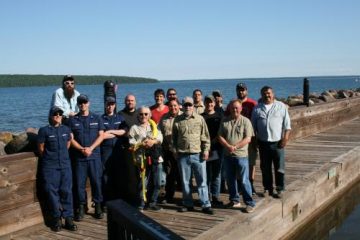 To assist with this effort Michigan Sea Grant coordinated six Drill Conductor Training courses held throughout the Great Lakes region recently to help Great Lakes commercial fishing vessel captains fulfill U.S. Coast Guard regulations related to instruction, drills and safety orientations, and onboard emergency instruction. Commercial fishers are required to practice monthly emergency drills that cover ten contingencies spelled out in the regulation. Persons conducting these drills must have passed a Drill Conductor Training course. The Alaska Marine Safety Education Association (AMSEA) assisted Michigan Sea Grant with these training efforts that were held in Michigan and Wisconsin. Read the rest here 16:54
To assist with this effort Michigan Sea Grant coordinated six Drill Conductor Training courses held throughout the Great Lakes region recently to help Great Lakes commercial fishing vessel captains fulfill U.S. Coast Guard regulations related to instruction, drills and safety orientations, and onboard emergency instruction. Commercial fishers are required to practice monthly emergency drills that cover ten contingencies spelled out in the regulation. Persons conducting these drills must have passed a Drill Conductor Training course. The Alaska Marine Safety Education Association (AMSEA) assisted Michigan Sea Grant with these training efforts that were held in Michigan and Wisconsin. Read the rest here 16:54
Wisconsin DNR ponders commercial whitefish regulation changes, Sport fishers concerned
 A leading Wisconsin sportfishing advocate is urging anglers to provide input as the Department of Natural Resources considers changes to rules in Green Bay and Lake Michigan. Based on shifts in whitefish abundance, the DNR is mulling changes to its commercial fishing framework for the species. Although the agency has yet to release a proposed rules change, commercial interests have been seeking higher whitefish quotas in southern Green Bay or the ability to use unfilled quotas from other zones in the lower bay. And some commercial fishers would like to be able to sell walleye taken as “bycatch.” Walleye currently are protected from commercial fishing in Wisconsin. Read the rest here 16:39
A leading Wisconsin sportfishing advocate is urging anglers to provide input as the Department of Natural Resources considers changes to rules in Green Bay and Lake Michigan. Based on shifts in whitefish abundance, the DNR is mulling changes to its commercial fishing framework for the species. Although the agency has yet to release a proposed rules change, commercial interests have been seeking higher whitefish quotas in southern Green Bay or the ability to use unfilled quotas from other zones in the lower bay. And some commercial fishers would like to be able to sell walleye taken as “bycatch.” Walleye currently are protected from commercial fishing in Wisconsin. Read the rest here 16:39
A Life of Subsistence Fishing on Grand Traverse Bay for Ed and Cindy John
 They’re married, they’re Native American, and they make a living fishing on Grand Traverse Bay. Ed and Cindy John share thoughts about subsistence fishing during a windy day setting nets. “When you look at the lake you see a calm beautiful surface, but when you talk about the fishery, when you go underneath, it’s like a metropolis down there,” says Cindy John, her piercing eyes darting from depth sounder to GPS coordinates to husband Ed, precariously braced against a gunwale. Today, West Grand Traverse Bay is anything but a calm surface. Two days into a ferocious summer blow, the blue-green miles of water between the peninsulas are a jagged fabric of whitecaps that skitter crates of netting across the Linda Sue’s tilting aft deck. Sideways to the wind, the heavy trawler wallows in the wave troughs, its growling diesel outdrive pushing steadily toward the edge of a deep-water bank, where the Johns hope to intercept schools of whitefish and lake trout in their summer pattern. Great story, Read the rest here 18:01
They’re married, they’re Native American, and they make a living fishing on Grand Traverse Bay. Ed and Cindy John share thoughts about subsistence fishing during a windy day setting nets. “When you look at the lake you see a calm beautiful surface, but when you talk about the fishery, when you go underneath, it’s like a metropolis down there,” says Cindy John, her piercing eyes darting from depth sounder to GPS coordinates to husband Ed, precariously braced against a gunwale. Today, West Grand Traverse Bay is anything but a calm surface. Two days into a ferocious summer blow, the blue-green miles of water between the peninsulas are a jagged fabric of whitecaps that skitter crates of netting across the Linda Sue’s tilting aft deck. Sideways to the wind, the heavy trawler wallows in the wave troughs, its growling diesel outdrive pushing steadily toward the edge of a deep-water bank, where the Johns hope to intercept schools of whitefish and lake trout in their summer pattern. Great story, Read the rest here 18:01
A dream becomes a nightmare
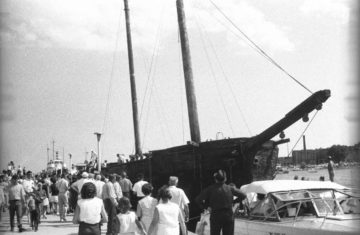 When Dick Garbowski, a commercial fisherman in Green Bay, snagged an expensive net on an unknown obstruction in Lake Michigan in 1967, he probably did not know that he would set events in motion that would culminate in crushed dreams and a demolished schooner with a historical designation. Garbowski called an experienced diver and friend, Frank Hoffman, to help him free his $1,400 fishing net. The two originally kept their problem a secret, because as V.O. Van Heest writes in “Lost and Found,” “Garbowski had kept quiet about the predicament worried that someone might hear about it and try to abscond with the $1,400 net. Hoffman, too, had kept quiet because he knew that news of a new wreck could bring out other divers intent on looting.” was not until the summer of 1968 that the net was finally freed and Frank Hoffman realized he had an almost intact shipwreck to explore. The shipwreck was the Alvin Clark. Read the story here 16:42
When Dick Garbowski, a commercial fisherman in Green Bay, snagged an expensive net on an unknown obstruction in Lake Michigan in 1967, he probably did not know that he would set events in motion that would culminate in crushed dreams and a demolished schooner with a historical designation. Garbowski called an experienced diver and friend, Frank Hoffman, to help him free his $1,400 fishing net. The two originally kept their problem a secret, because as V.O. Van Heest writes in “Lost and Found,” “Garbowski had kept quiet about the predicament worried that someone might hear about it and try to abscond with the $1,400 net. Hoffman, too, had kept quiet because he knew that news of a new wreck could bring out other divers intent on looting.” was not until the summer of 1968 that the net was finally freed and Frank Hoffman realized he had an almost intact shipwreck to explore. The shipwreck was the Alvin Clark. Read the story here 16:42
U.S. brine shrimp industry could be in peril if Great Salt Lake keeps shrinking
 If you want to get a sense of what a bizarre, globally interconnected economy we live in, look no further than the tiny brine shrimp living in the Great Salt Lake. Americans chow down around four pounds per person of shrimp and prawns a year. In 2014, we imported 567,551 tons of shrimp to eat. We consume more shrimp than any other seafood, including tuna and salmon. And that might not be possible if not for the non-charismatic, durable brine shrimp living in the Great Salt Lake — and the people fishing for them. Today, brine shrimp harvesting contributes just under $57 million to the state’s economy. But as the Great Salt Lake shrinks, the vitality of the brine shrimping industry is threatened. Read the rest here 16:41
If you want to get a sense of what a bizarre, globally interconnected economy we live in, look no further than the tiny brine shrimp living in the Great Salt Lake. Americans chow down around four pounds per person of shrimp and prawns a year. In 2014, we imported 567,551 tons of shrimp to eat. We consume more shrimp than any other seafood, including tuna and salmon. And that might not be possible if not for the non-charismatic, durable brine shrimp living in the Great Salt Lake — and the people fishing for them. Today, brine shrimp harvesting contributes just under $57 million to the state’s economy. But as the Great Salt Lake shrinks, the vitality of the brine shrimping industry is threatened. Read the rest here 16:41
Dairy farms taking a toll on Great Lakes, waterways

Great Lakes Fisheries Heritage Trail: Evelyn S. still making history
A new Great Lakes Fisheries Heritage Trail offers opportunity to explore the past, present and future of the lakes through the lens of fish and fishing (See Part 1, series introduction). In this article, we visit South Haven and the Michigan Maritime Museum to explore commercial fishing heritage of west Michigan as told through the historic commercial fishing vessel, Evelyn S. The Evelyn S. was built in 1939 by Sturgeon Bay Boat Works William Selman Fisheries of Manistique, Mich. She fits the typical wooden gill net fish tug design so prevalent on the waters during this period. Read the rest here 09:56
Michigan state officials recommend against Great Lakes fish farms
 Three state agencies released a report recommending Michigan not pursue commercial fish farming operations in the Great Lakes because of several environmental and economic risks. The state departments of agriculture and rural development, environmental quality and natural resources released a report Wednesday on the controversial topic and proposals regarding net-pen aquaculture — a practice that involves raising fish in underwater nets, or solid structure cages serving as pens, also known as fish farming — in northern Lakes Huron and Michigan. The agencies concluded the report by urging the state not to pursue commercial net-pen aquaculture in the Great Lakes at this time. Read the rest here 11:31
Three state agencies released a report recommending Michigan not pursue commercial fish farming operations in the Great Lakes because of several environmental and economic risks. The state departments of agriculture and rural development, environmental quality and natural resources released a report Wednesday on the controversial topic and proposals regarding net-pen aquaculture — a practice that involves raising fish in underwater nets, or solid structure cages serving as pens, also known as fish farming — in northern Lakes Huron and Michigan. The agencies concluded the report by urging the state not to pursue commercial net-pen aquaculture in the Great Lakes at this time. Read the rest here 11:31
Great Lakes Fisheries Heritage Trail: Katherine V a lone survivor and fishing legend
 A Great Lakes gill net fish tug, the Katherine V was built in 1928 on the shores of northern Lake Huron in Rogers City by Native American builder Henry Vincent, and was fished by the Vogelheim family, who owned and operated the Katherine V from her launch until retirement in 1970. At 57 feet in length, entirely enclosed, and powered by a Kahlenberg 3-cylinder engine the tug is an example of late 19th and early 20th century Great Lakes commercial fishing vessels. Constructed of white oak, northern white cedar and cypress, the boat was eventually sheathed in steel and aluminum early in its fishing career to aide in fishing through the winter. Read the rest here 19:27
A Great Lakes gill net fish tug, the Katherine V was built in 1928 on the shores of northern Lake Huron in Rogers City by Native American builder Henry Vincent, and was fished by the Vogelheim family, who owned and operated the Katherine V from her launch until retirement in 1970. At 57 feet in length, entirely enclosed, and powered by a Kahlenberg 3-cylinder engine the tug is an example of late 19th and early 20th century Great Lakes commercial fishing vessels. Constructed of white oak, northern white cedar and cypress, the boat was eventually sheathed in steel and aluminum early in its fishing career to aide in fishing through the winter. Read the rest here 19:27
A fishy business: Dramm Corp. turns fish scraps into organic fertilizer

EPA approves “vertebrate pheromone biopesticide” to battle dreaded Great Lakes Sea Lamprey
 After decades of development and testing, an effort to use pheromones to fool the sex drive of lampreys in the Great Lakes has been deemed “good enough” to be registered by the U.S. Environmental Protection Agency. The EPA last week registered the pheromone, 3kPZS, as the first “vertebrate pheromone biopesticide” authorized for use in U.S. waters. While it’s worked in test efforts, it’s now hoped that the pheromone, when poured into rivers, will attract adult lampreys on a large scale to a specific spot where they can be captured and destroyed before,,, Read the article here 08:00
After decades of development and testing, an effort to use pheromones to fool the sex drive of lampreys in the Great Lakes has been deemed “good enough” to be registered by the U.S. Environmental Protection Agency. The EPA last week registered the pheromone, 3kPZS, as the first “vertebrate pheromone biopesticide” authorized for use in U.S. waters. While it’s worked in test efforts, it’s now hoped that the pheromone, when poured into rivers, will attract adult lampreys on a large scale to a specific spot where they can be captured and destroyed before,,, Read the article here 08:00
The first year of a three-year experiment allowing commercial fishing for whitefish in southern Lake Huron is wrapping up.
Tom Goniea, the administrator for the Michigan Department of Natural Resources’ commercial fishing program, said 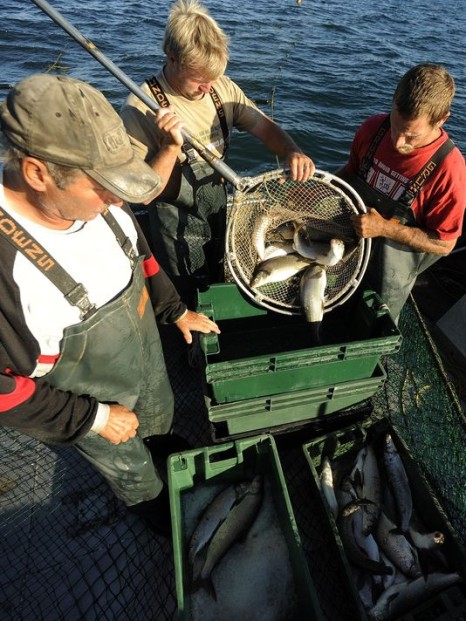 of Pinconning had collapsed his trap nets before pulling them. “He’s done for the season now,” Goniea said. “I was out on his boat (Oct. 26) when he did his last set of the year.” Goniea said the experiment likely will continue in 2016. “I see no reason why it wouldn’t at this point,” he said. “He was relatively successful this year considering the fact he missed the first two months of the season. Read the rest here 09:43
of Pinconning had collapsed his trap nets before pulling them. “He’s done for the season now,” Goniea said. “I was out on his boat (Oct. 26) when he did his last set of the year.” Goniea said the experiment likely will continue in 2016. “I see no reason why it wouldn’t at this point,” he said. “He was relatively successful this year considering the fact he missed the first two months of the season. Read the rest here 09:43
DNR busts illegal snapping turtle meat ring in Frazee
 Slaughtering a hog seems like a bargain at Ketter’s Meats in Frazee, almost 200 miles northwest of the Twin Cities. The old school butcher shop charges $20 per pig. Cutting and wrapping the other white meat costs 40 cents more per pound. Ketter’s also deals in wild flesh like snapping turtle. A five-pound package of semi-boneless meat from the shelled creature can be had online for $90. It was trying to make that kind of bank that got Ketter’s in trouble. Read the rest here 11:08
Slaughtering a hog seems like a bargain at Ketter’s Meats in Frazee, almost 200 miles northwest of the Twin Cities. The old school butcher shop charges $20 per pig. Cutting and wrapping the other white meat costs 40 cents more per pound. Ketter’s also deals in wild flesh like snapping turtle. A five-pound package of semi-boneless meat from the shelled creature can be had online for $90. It was trying to make that kind of bank that got Ketter’s in trouble. Read the rest here 11:08
Study: Less than 3 percent of eels survive Ontario dams
 The study, published by the American Fisheries Society in one of their symposium series, Managing the Impact of Human Activities on Fish Habitat: the Governance, Practices and Science in June 2015, looked at eels in the upper St. Lawrence River, Ottawa River and Lake Ontario watersheds in eastern Ontario. It examined the cumulative effects of hydroelectric dams on the eels and projected that only 2.8 out of every 100 eels would survive passing through them as they traveled through the Mississippi and Ottawa Rivers to the Upper St. Lawrence River. Read the rest here 10:56
The study, published by the American Fisheries Society in one of their symposium series, Managing the Impact of Human Activities on Fish Habitat: the Governance, Practices and Science in June 2015, looked at eels in the upper St. Lawrence River, Ottawa River and Lake Ontario watersheds in eastern Ontario. It examined the cumulative effects of hydroelectric dams on the eels and projected that only 2.8 out of every 100 eels would survive passing through them as they traveled through the Mississippi and Ottawa Rivers to the Upper St. Lawrence River. Read the rest here 10:56
“Concentrated fish poo is just not Pure Michigan,” Sen. Jones works to ban fish farming in the Great Lakes
 “In Michigan, legislators have a Constitutional duty to protect our Great Lakes,” said Jones, R-Grand Ledge. “By allowing commercial fish farming we can say goodbye to our Pure Michigan status and hello to an undrinkable Toledo water supply.” Jones said commercial fish farms in the Great Lakes are all risk and no reward. These are proven sources of pollution, invasive species, disease, and fugitive fish escaping to wreak havoc on our Great Lakes fisheries. Read the rest here 07:06
“In Michigan, legislators have a Constitutional duty to protect our Great Lakes,” said Jones, R-Grand Ledge. “By allowing commercial fish farming we can say goodbye to our Pure Michigan status and hello to an undrinkable Toledo water supply.” Jones said commercial fish farms in the Great Lakes are all risk and no reward. These are proven sources of pollution, invasive species, disease, and fugitive fish escaping to wreak havoc on our Great Lakes fisheries. Read the rest here 07:06
Commercial fisherman pulls a grass carp from his net in Lake Erie
 On Thursday, September 17, 2015 a commercial fisherman had an interesting find when he pulled a grass carp from his net in Lake Erie .The Grass carp is a species of the Asian carp, which feeds on aquatic vegetation. The fish was caught west of Point Pelee Thursday morning and weighed in at about 23 pounds (10.5 kilograms), though they have been known to grow upwards of 99 pounds (45 kilograms). The carp was sent to the Department of Fisheries and Oceans in Burlington for testing. This specific testing will include whether the fish was fertile or sterile,,, Read the rest here 12:22
On Thursday, September 17, 2015 a commercial fisherman had an interesting find when he pulled a grass carp from his net in Lake Erie .The Grass carp is a species of the Asian carp, which feeds on aquatic vegetation. The fish was caught west of Point Pelee Thursday morning and weighed in at about 23 pounds (10.5 kilograms), though they have been known to grow upwards of 99 pounds (45 kilograms). The carp was sent to the Department of Fisheries and Oceans in Burlington for testing. This specific testing will include whether the fish was fertile or sterile,,, Read the rest here 12:22
Battle brewing over fish farming in Great Lakes
 Supporters of the idea say Michigan is perfectly positioned to be a world leader in freshwater aquaculture and home to all the science, engineering and manufacturing that would accompany this growing part of the world’s food economy. But critics counter the Great Lakes are no place for so-called net-pen fish farming because of the higher risk of disease and water pollution that accompanies this method. Read the rest here 13:40
Supporters of the idea say Michigan is perfectly positioned to be a world leader in freshwater aquaculture and home to all the science, engineering and manufacturing that would accompany this growing part of the world’s food economy. But critics counter the Great Lakes are no place for so-called net-pen fish farming because of the higher risk of disease and water pollution that accompanies this method. Read the rest here 13:40
SECURE THE BOARDER! Asian carp discovery in Toronto prompts swift response
 Canadian officials have moved quickly after an invasive species of fish was spotted in ponds in Toronto. It’s one of the largest responses ever against Asian carp. “We’re seeing an invasion happening in the U.S., so we can see the devastation that these species are having. We’re seeing native species pushed out for food and space, we’re seeing loss of habitat in wetlands areas and we’re seeing declines in commercial fishery values,” said Becky Cudmore, manager of the Asian Carp program. “Those are the type of impacts that these Asian carp species are,,, Read the rest here 14:03
Canadian officials have moved quickly after an invasive species of fish was spotted in ponds in Toronto. It’s one of the largest responses ever against Asian carp. “We’re seeing an invasion happening in the U.S., so we can see the devastation that these species are having. We’re seeing native species pushed out for food and space, we’re seeing loss of habitat in wetlands areas and we’re seeing declines in commercial fishery values,” said Becky Cudmore, manager of the Asian Carp program. “Those are the type of impacts that these Asian carp species are,,, Read the rest here 14:03
In The Upper Midwest, Summertime Means Fish Boils
 Long ago, when settling the Great Lakes, Scandinavian immigrants brought with them an ingenious method of feeding lots of people, on the cheap. Mark Weborg, whose family immigrated to the area in the 1800s, says his family has been doing fish boils for generations. “I’m the fourth generation, my son-in-law is the fifth generation, here, at commercial fishing in Door County,” Weborg says. “My great-great-great-grandfather brought [the fish boil] over here from Norway. And we used to have it around the sheds just for the crew.” Read the rest here 20:02
Long ago, when settling the Great Lakes, Scandinavian immigrants brought with them an ingenious method of feeding lots of people, on the cheap. Mark Weborg, whose family immigrated to the area in the 1800s, says his family has been doing fish boils for generations. “I’m the fourth generation, my son-in-law is the fifth generation, here, at commercial fishing in Door County,” Weborg says. “My great-great-great-grandfather brought [the fish boil] over here from Norway. And we used to have it around the sheds just for the crew.” Read the rest here 20:02
Chatham-Kent’s amazing fishing economy sometimes overlooked
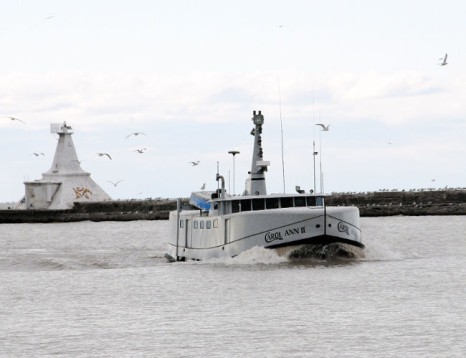 There are currently 16 fish processors located in various regions throughout Ontario. Here in Chatham-Kent, we have three of them, so we are well represented. The economic impacts of Lake Erie’s commercial fishing sector are significant. For the fishing sector on Lake Erie, they account for over 700 direct and indirect jobs with a GDP of over $28 million. The Lake Erie fish processing sector accounts for close to 800 direct and indirect jobs, with a GDP of over $77 million. Read the rest here 19:49
There are currently 16 fish processors located in various regions throughout Ontario. Here in Chatham-Kent, we have three of them, so we are well represented. The economic impacts of Lake Erie’s commercial fishing sector are significant. For the fishing sector on Lake Erie, they account for over 700 direct and indirect jobs with a GDP of over $28 million. The Lake Erie fish processing sector accounts for close to 800 direct and indirect jobs, with a GDP of over $77 million. Read the rest here 19:49
What European demand for caviar means for a Great Lakes fish
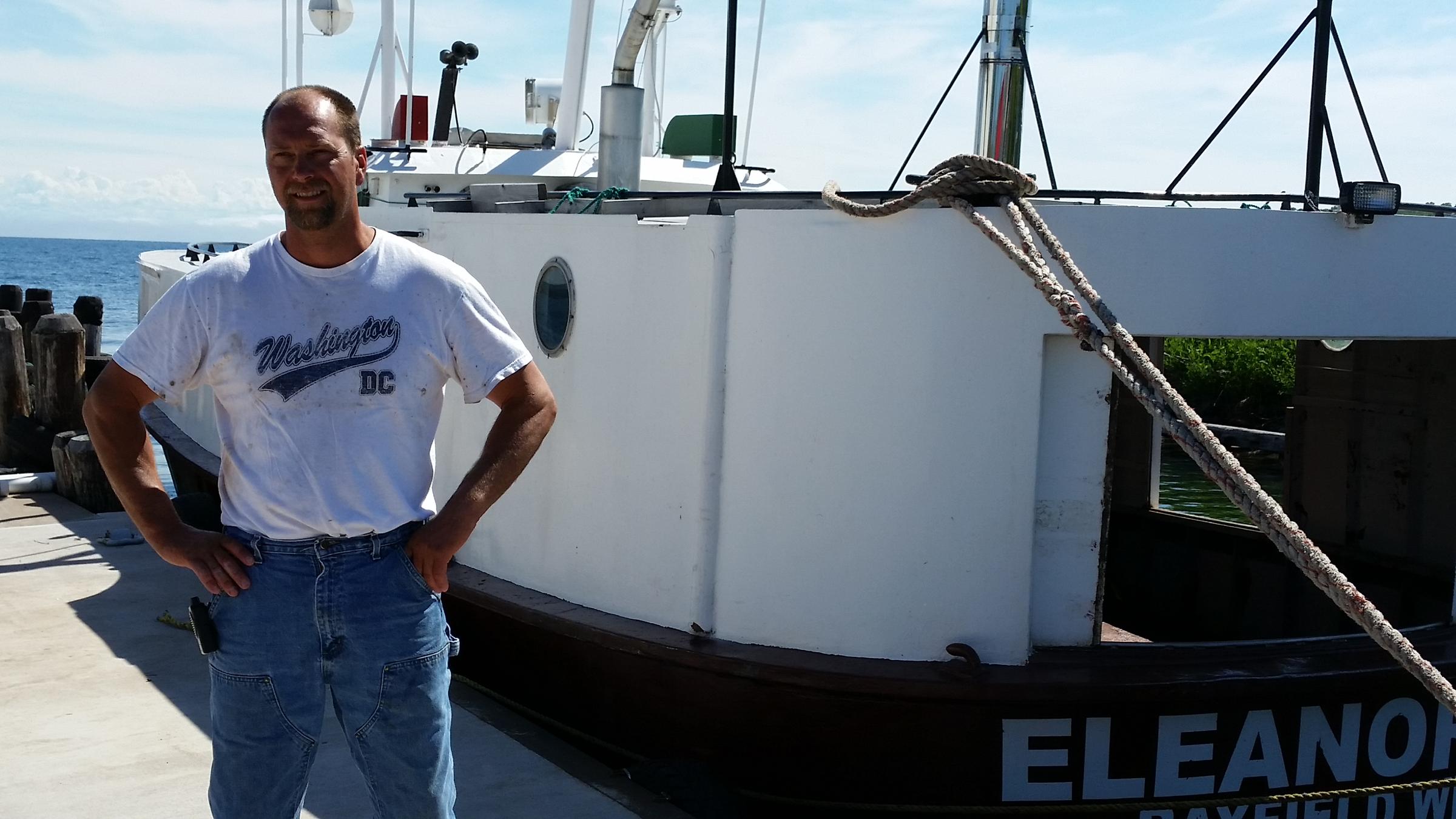 Lake Superior is the largest freshwater lake in the world by surface area, and it has something the other Great Lakes don’t — stable populations of mostly native fish species. But scientists say a key fish in Superior’s food web is now in trouble because of mild winters and an appetite for caviar in Europe. There wasn’t much demand for lake herring until a few years ago. Craig Hoopman says it used to be fed to mink and used as fertilizer. He says around 2007, Scandinavians started buying lake herring eggs, or roe, for caviar. Listen, Read the rest here 12:11
Lake Superior is the largest freshwater lake in the world by surface area, and it has something the other Great Lakes don’t — stable populations of mostly native fish species. But scientists say a key fish in Superior’s food web is now in trouble because of mild winters and an appetite for caviar in Europe. There wasn’t much demand for lake herring until a few years ago. Craig Hoopman says it used to be fed to mink and used as fertilizer. He says around 2007, Scandinavians started buying lake herring eggs, or roe, for caviar. Listen, Read the rest here 12:11

































